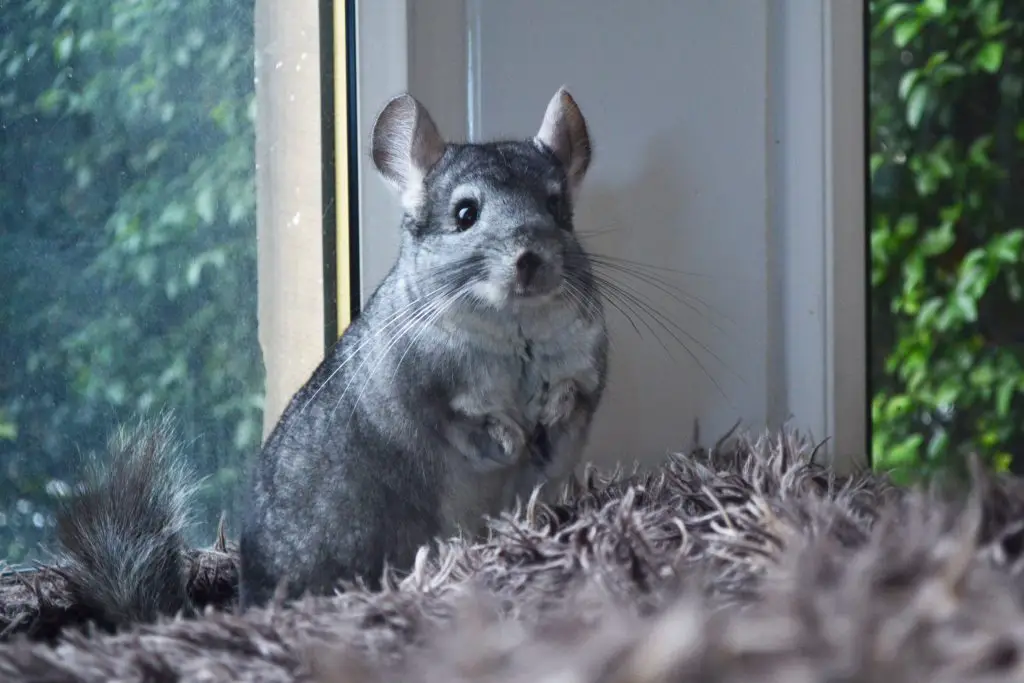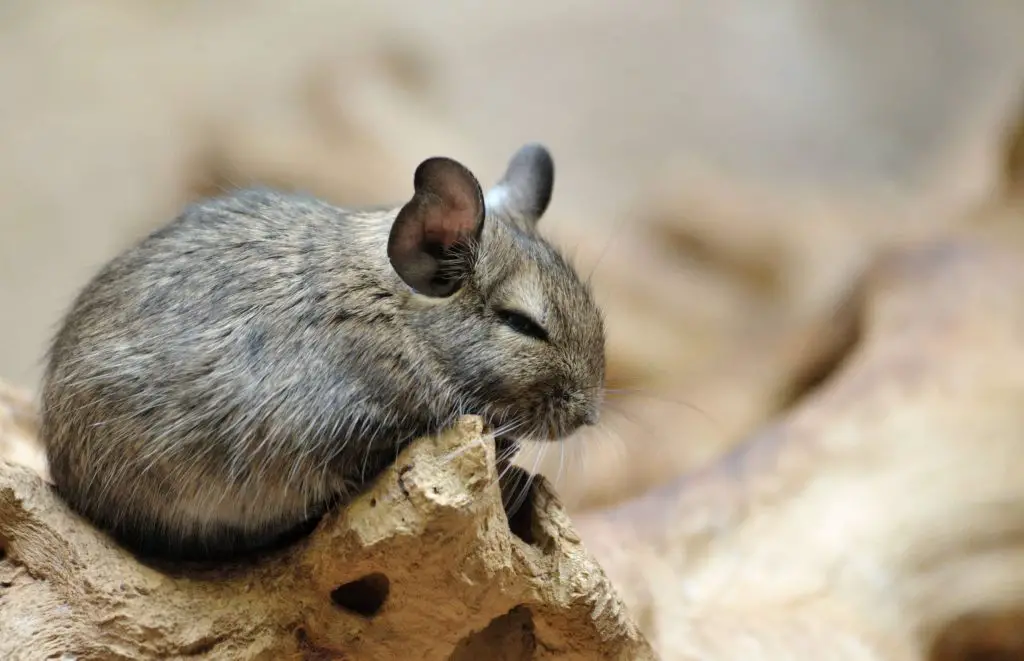Chinchillas are a rodent, or a mammal more specifically that is mostly found in South America. There are a lot of different species of chinchilla in the wild. The chinchilla is an exotic and acrobatic animal that intrigues a lot of people out there. If you are one of the people who want to know more about these intriguing animals, keep reading.
This article will tell you all that you need to know about chinchillas and their active lives. So without any further due, let’s jump onto this article.
What is the classification/ taxonomy of chinchillas?

Before getting deeper into the article, knowing what these animals are is essential.
Generally, these small creatures are known as mammals. There are two species of chinchillas, C. Lanigera and C. Chinchilla. The C. Lanigera is a long-tailed chinchilla while C. Chinchilla is a short-tailed chinchilla. The possession of fur or hair classifies mammals, and female mammals have mammary glands which produce milk to feed the young.
What are the physical characteristics of chinchillas?
These small animals that look kind of like rats are very social animals and have physical characteristics that will help you classify them!
These animals are usually 12 inches long and have a life span of 10 to 20 years. Here are some more facts about these native South American animals.
- Size: The male chinchilla is usually smaller than the female chinchillas, but their weight on average is around 500 to 1000gm for adult chinchillas. These animals are a little larger than a Guinea Pig.
- The fur: One of the most important parts of this animal is its fur. Chinchilla fur is very thick as there are 60 hairs per follicle in the chinchilla fur. These chinchilla furs gained the most popularity from the 16th century to the 19th century.
- Short-tailed Chinchilla: This one is the fatter of the two species of chinchilla. As the name suggests, it has a short tail, short ears, a thick neck and shoulder, and much thicker fur. Usually, all chinchillas have a short-rounded body, large mouse-like ears, and short pair of legs.
- Colors: The Chinchilla has different colors of fur as well. The wild chinchillas were originally blue-grey colored. However, after these turned into domesticated Chinchillas, the people took part in selective breeding, and now they have coats that are black, grey, white, and beige. The pet shops usually sell these domesticated chinchillas to be pet chinchillas.
History of the chinchillas
These animals came from South America around 41 million years ago and had a long and interesting history. Believe it or not, these animals were once very common but due to hunters hunting them down, they were almost extinct. The reason these were hunted was due to their soft and luxurious fur, which could be used to make coats, rugs, and whatnot. Now hunting wild chinchillas is considered illegal hunting, but the law doesn’t stop everyone from hunting them.
Offspring & breeding
The breeding season for chinchillas lasts from May till November. This means that during this season, they find a mate and have offspring. Usually, a female chinchilla has babies twice a year, and they keep the babies for 111 days!
It is very important to handle a pregnant chinchilla with utmost care as they are already fragile and become even more during pregnancy. However, it is best to have chinchillas of the same sex so that there is no issue handling large numbers of their babies.
Suitable habitat in the wild and at home

The habitat for these animals was the cold, dry desert at very high altitudes. Now, they live in rock crevices and the arid environment of South American mountains. Since these animals are social animals and require social interaction, they lived in colonies with up to 100 of the animals together. Historically, these animals were most common in Peru, Chile, Bolivia, and Argentina. These animals were present with unlimited access until they were hunted to almost extinction.
To take care of the chinchillas, you need to have suitable habitat for them. The best way to keep it safe is by having a cage for the chinchillas. These cages should be made up of plastic, so it doesn’t irritate the feet of your pet. As for bedding, there is a variety of bedding that is suitable for chinchillas and can be decided upon based on your preference. Good options for bedding include shredded or pelleted paper products, reclaimed wood pulp waste, and aspen or pine shavings.
Moreover, the cage should have multiple levels for them to be able to actively go from one floor to another to find a suitable hiding place. They need to stay in a cooler environment as they are susceptible to heatstroke and other medical conditions when in an unsuitable temperature.
Conservation & endangerment
The wild chinchillas had a very limited diet and ate grass, twigs, occasional insects, and cacti. Other wild animals predated these animals like owls, foxes, and hawks; people in the past used these, mostly foxes, to hunt the chinchillas. Soon this animal was hunted to almost extinction. Even nowadays, the number of chinchillas in the wild is very limited.
Nowadays, domestic chinchillas are present as a result of the hybrid between the two initial species. These domesticated chinchillas are very different from their ancestors. This main change is in the size as wild chinchillas were relatively small, and the chinchilla fur was of a different color as well.
Some interesting chinchilla facts
To know more about these chins, let us look at some interesting facts about these nocturnal animals.
- This now captive animal was named after the Chincha people of Andes Mountain in South America.
- The Chincha people wore the chinchilla fur for its unique and velvety feel and also because this fur was dense.
- Although chinchillas live in crevices in rocks, they can still jump up to 5 to 6 feet in the air.
- Chinchillas’ teeth are very interesting too. They are open rooted, which means they continue to grow throughout their lives.
- Chinchillas have a great defense mechanism to get away from their prey. Such as doing the “fur slip” technique in which patches of fur fall out whenever there is a frightened chinchilla. They also pee on the predator to get away from it.
- The chinchilla fur is considered to be the softest in the whole world. It is about 30 times softer than a human hair.
- These tiny animals take dust baths to clean themselves. Chinchillas do this to get rid of the dry and flaky skin, prevent the fur from getting fungus, and prevent parasites from sticking to them.
- The red blood cells of chinchillas are much more competent than any other rodent. These cells can hold much more oxygen as chinchillas usually live in higher altitudes.
Diet: what is healthy for them?
What do chinchillas eat? Let’s get into it…
Chinchillas use their front paws to eat food. To have chinchillas as pets, you need to know how to take care of the animal and feed it.
Since these animals used to eat grass and other such things historically, they can still not eat sugar and fat. To feed a chinchilla, you need food items that are high in fiber and low in carbohydrate and fat. Some things that you can add to a diet for chinchillas are listed below.
- High-fiber grass hay
- Orchardgrass or prairie grass
- High-quality chinchilla pellet
- Leafy greens
- Occasionally dried apples
- Occasionally raisins
- Occasionally sunflower seeds
A poor diet can lead to medical conditions in the chinchilla, so treats for chinchillas being balanced is very important.
Chinchilla behavior
Make sure that the cage and the room in which these creatures are kept don’t have poor ventilation. Of course, you will also need a dust bath. You should also know about the diseases in chinchillas, and if there is a serious medical emergency, then knowing an exotic animal veterinarian is essential.
These can be kept as a single pet or as a pair but make sure not to have opposite genders as it can cause problems due to mating issues. These are fragile creatures, so you need to take care of them properly. Holding them properly is important as well as these creatures get scared easily. Therefore, having chinchillas in houses with no other pets is important as dogs and cats may see the chinchilla as prey.
Proper care will keep your chinchilla healthy. However, there are some illnesses that these creatures are in danger of. Some common diseases that chinchillas are at risk of being,
- Dental diseases
- Gastrointestinal stasis
- Diarrhea
- Bloating
- Heatstroke
- Skin problems
Luckily, all you need to do to keep the pet safe and healthy is by taking proper care of it. If you think there is a small, unusual symptom, then taking the chinchilla immediately to the vet is important. Do not give chinchillas to kids under 10 as they might not be able to take proper care of them. This is why adults and teenagers are the best fit to take care of these creatures.
To make sure that you don’t regret buying these furry friends, you need to know if you and your family can properly take care of them. Making a decision hastily can bring more harm than good. Just because these are small animals doesn’t mean that they require any less care. In fact, they are much more sensitive than other bigger animals. If you take care of them properly, chinchillas can be a great company for pet owners. You should know a proper vet to take your pet chinchilla to before purchasing one in an emergency condition.
In conclusion, chinchillas are great for a variety of things, such as companionship. Illegal hunting of these animals has made them one of the rare animals, but hopefully, soon, they will be reintroduced in the wild so their numbers can grow again. If you want this animal as a pet, then make sure to take proper care of it as well!
Hi, my name’s Elena Coolidge, and this is my site. Chinchillas are so cute and such intelligent animals that make great pets. They’ve become the subject of fascination for many animal lovers who enjoy their antics. I blog about their care, where to buy them, breeders, and more. Shoot me an email if you have a question!
